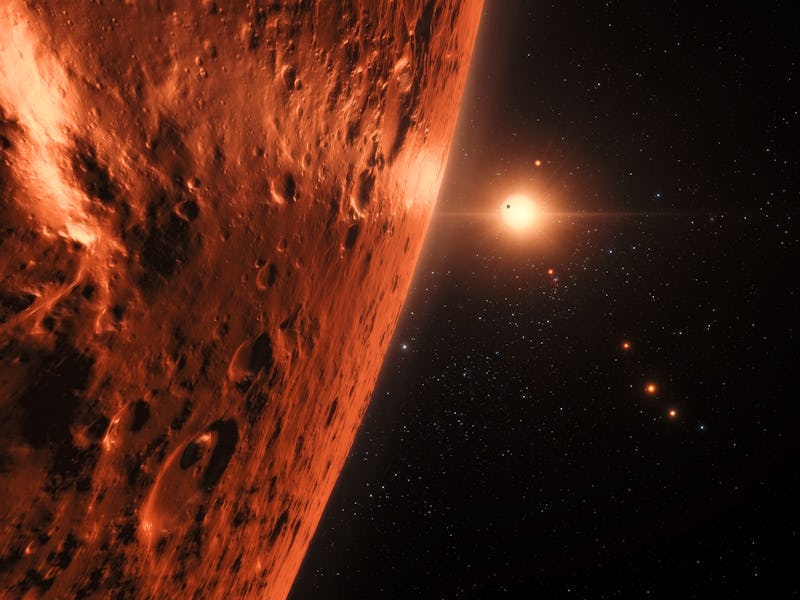Hubble Stumbles on Signs of Water on TRAPPIST-1

While most of the public recognizes the Hubble Space Telescope as humanity’s premier provider of space porn, there’s also an incredible amount of science the 27-year-old metallic space eye is able to accomplish — including raising hopes that there’s another planet habitable to life somewhere else in the universe.
Remember TRAPPIST-1? The ultra cool white dwarf star sitting 40 light-years away that possesses seven potentially habitable planets in its system? Scientists have just found evidence that suggests the outer planets of that system could possess significant amounts of water — including the three planets most prominently sitting in the system’s vaunted Goldilocks zone.
If those worlds do indeed possess water, the chances they may prove habitable to humans of the distant future who master interstellar travel — or to alien forms of life that may already call these places home — are much better than we could have hoped.
Hubble, humanity's humble eyes in the sky.
An international team of astronomers poured over Hubble data in order to assess how much UV radiation the TRAPPIST-1 planets were receiving. Although UV radiation can be harmful to life in high doses and render a planet sterile, it’s also an important factor in fostering habitable conditions.
“As in our own atmosphere, where ultraviolet sunlight breaks molecules apart, ultraviolet starlight can break water vapor in the atmospheres of exoplanets into hydrogen and oxygen,” says Swiss astronomer Vincent Bourrier, from the Observatoire de l’Université de Genève.
That UV-led breakup of water molecules, called photodissociation, is complemented by stronger UV rays heating up the atmosphere of the planet, which allows the resulting hydrogen and oxygen atoms to escape out the planet. The UV radiation rates emanating from the host star in the TRAPPIST-1 system are large enough to have caused the planets to have hemorrhaged large amounts of water over time. The inner planets of the system, TRAPPIST-1b and -TRAPPIST-1c, could have lost more than 20 times the amount of water contained in Earth’s oceans over the course of 8 billion years.
But the outer planets, including the three which are thought to have the best odds of sustaining liquid water on their surfaces, will have still lost water, but much less. Calculated water loss rates, combined with what we currently know about planetary geology and atmospheric chemistry, suggest those three could retain a substantial amount of water favorable to life.
Of course, we have no way of actually measuring that water right now. More research will undoubtedly be necessary in order to verify whether TRAPPIST-1 could indeed host some sort of life or another. The upcoming James Webb Space Telescope, the successor to Hubble, could be the key to unlocking that mystery — so perhaps we might be blessed with some encouraging news as early as 2019.